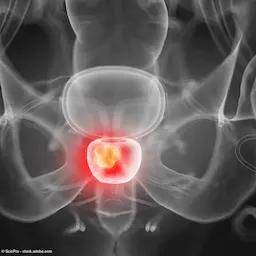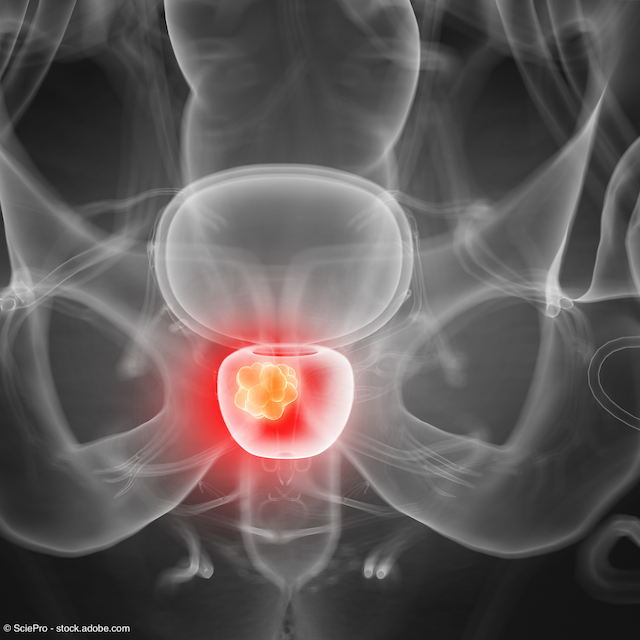Feature
Article
Unlocking the potential of PSMA-PET: The need for interdisciplinary collaboration in image interpretation
Author(s):
"The radiologist more than ever has to be part of the care team," says Phillip H. Kuo, MD, PhD, FACR.
In this interview, Phillip H. Kuo, MD, PhD, FACR, discusses the key elements of a PSMA-PET report and the importance of collaboration between urologists and radiation oncologists in the interpretation and application of PSMA-PET findings. Kuo is a professor of radiology, section chief of nuclear medicine, and the director of theranostics for the department of diagnostic radiology at City of Hope National Medical Center in Duarte, California.
This transcription has been edited for clarity.
Phillip H. Kuo, MD, PhD, FACR

What are some of the key elements of a comprehensive PSMA-PET report that radiation oncologists are considering and urologists should pay attention to in the interpretation of image findings?
That's a great question. That's been a big source of discussion, and very appropriately. Like many things to do with clinical care, there has to be a balance. There are clinical trial reporting schemas for PSMA-PET that are truly excellent for PSMA-PET in clinical trials. But if you asked your typical radiologist or nuclear medicine physician to do that, they will probably push back, because there's just not a lot of time and it's done for a different purpose. On the other hand, your clinical report in a standard clinical setting can't be bare bones and leave a question with everything.
I'm just going to put a little pitch out for my field; don't get mad at us if occasionally we have to say something's equivocal, but it does happen. We have obviously tried to avoid that. Truly, there are things that you can flip a coin, but it's uncommon. If things are borderline, at least try to steer one way or the other, so radiation oncology can know for example if they should modify the coverage of their planning. Get to know your radiation oncologist and the fields and boosts they do. If something is, for example, just outside of their typical pelvic field when reading for biochemical recurrence, you want to let them know about that.
It's also good to take the extra step, if your system allows, to save screen captures. [This is] particularly [helpful] for radiation oncology, because they are image guided. The radiation oncologists are often very good at looking at images and providing proper image guidance to do their treatment fields and their gross tumor volumes. They're now being trained, of course, in molecular imaging techniques to guide their therapies, but it's still nice to give them a screen capture in case there is some subtle node that they might have missed, because they might not have an optimum PET/CT software viewing system.
With PSMA-PET and highly advanced PET scanners, we can find tiny nodes now. It has changed what we thought was the disease patterns, particularly in the supraclavicular region, where there's a Virchow node. Sometimes in patients with early disease, you're shocked that it's already gone distant to a Virchow node; that changes everything. But sometimes it's just as subtle as a tiny 2 mm node that is clearly PSMA positive just at the bifurcation of the iliac arteries, which someone might have missed if they weren't looking on dedicated PET/CT software. Know the treatment plans so that you can tailor your reports to what they need to know.
But of course, it often comes down to open lines of communication, which we all know is so difficult when we're so busy. I don't mean to discount the real inundation of [being] flooded with images in any imaging practice. In my opinion, clinical reports need to be concise, because we can't dictate out 20 SUV measurements and 20 nodal measurements and everything else. We would never get to reading all your PET scans that you need us to. But at the same time, the impression of the report has to focus on being clear about the significance of the findings and what will change patient management. You have to know what that patient management is, of course, to do that. That will vary from center to center, and there's of course nothing wrong with that.
How can urologists and radiologists improve their communication regarding PSMA-PET findings to improve patient outcomes?
Communication with radiology, urology, and all clinicians is critical. Reports are the medium by which we transmit and preserve our findings and impressions. But, of course, there's nothing quite like face to face. Sometimes it just requires that phone call. A lot of places have multidisciplinary conferences, which are super important to attend.
There are some findings that are equivocal. Radiology is not perfect. The exact same finding could be malignancy [in 1 patient] and could be benign in another patient. There's sometimes no way to tell. You have to be able to relay that and take it the next step further, "Yes, I cannot exclude disease here with absolute certainty, but it's less than 5%, so please don't change this treatment management based on that." Also, communication, for example, with radiation oncology, particularly in the biochemical recurrence (BCR) setting; "I'm not definitive about any site, but there's a suspicious focus in the prostatectomy bed that if you guys were going to treat this area anyway,”––which they often do in the BCR setting, empirically––“you might want to consider boosting this area." This close communication is necessary to optimize patient treatment.
We have a lot of PSMA-PET tracers that are approved now and more in the wings. They are more similar than they are different. You certainly don't have to throw out everything you've ever learned about the prior PSMA-PET tracer if you move to a new one, but there are some differences to each one that you have to be cognizant of. The radiologist more than ever has to be part of the care team. We’re working in most places already, I think, with the medical oncologist closely. As we move earlier into the disease states, we're going to work potentially even more closely with urology and other groups, depending on their practice patterns.
How do you approach challenges in prostate cancer theranostics?
In a lot of practices, the tumor boards are [there] to figure out, "How did the pathology correlate this? Does this patient need to go to surgery?" I’ve found that the classical GU tumor board is actually not the optimal place to discuss all the different challenges with doing prostate cancer theranostics. I greatly respect my pathology colleagues, but by the time it's mCRPC status post-taxane and an ARPI, you don't really need a pathologist to tell you what the pathology is. It didn't really fit, at least in my experience with the classic GU tumor board, since there's a lot of patient management issues. For example, patients having nephrostomy tubes and radiation safety issues. [This] didn't fit with the time constraints of a very busy GU tumor board, where they have to talk about difficult bladder cancer and renal cancer cases too.
So, we actually created a separate prostate cancer PSMA-targeted multidisciplinary conference to direct these. It's often a very different conversation focused around management. We brought together nursing, care coordinators, nuclear medicine technologists, radiation safety, medical oncology, and nuclear radiology. Especially with the way that things are progressing in the field, imaging directs these treatments throughout the course of therapy beginning with the PSMA-PET for determining patient eligibility, so discussion of imaging is absolutely crucial. There's much more in-depth image review that has to be done for these multidisciplinary conferences with incorporation of imaging of the Pluvicto doses.
I just wanted to share [that] personal experience at our site, the City of Hope National Medical Center. We are really taking it to another level with a dedicated multidisciplinary conference. [It includes] many of the same people as in the GU tumor board, but it allows that conventional GU tumor board to spend the quality time they need on cases that need pathologists and surgeons. [We] felt that it had a different focus, which warranted a separate multidisciplinary conference, and it has been very well received.















